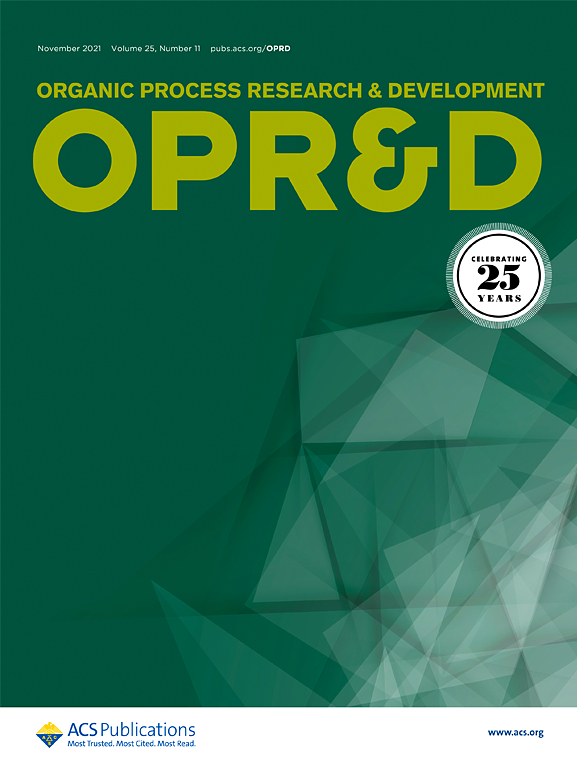3-取代喹啉类化合物光化学合成的连续流程研究
IF 3.1
3区 化学
Q2 CHEMISTRY, APPLIED
Organic Process Research & Development
Pub Date : 2025-04-22
DOI:10.1021/acs.oprd.4c0053410.1021/acs.oprd.4c00534
引用次数: 0
摘要
3-氰基喹啉是药物化学的重要组成部分;然而,它们有限的合成可及性限制了它们的使用。开发了一种新的连续流动策略,可以在几分钟内从2-(叠氮多甲基)-3-(芳基)丙-2-对腈中安全获得3-氰喹啉。我们的方法的多功能性是通过使用一组芳香醛作为起始材料,导致以前未开发的喹啉和满意的收率。本文章由计算机程序翻译,如有差异,请以英文原文为准。
Continuous Flow for the Photochemical Synthesis of 3-Substituted Quinolines
3-Cyano-quinolines are valuable building blocks in medicinal chemistry; however, their limited synthetic accessibility constrains their use. A new continuous-flow strategy was developed to safely obtain 3-cyanoquinolines from 2-(azidomethyl)-3-(aryl)prop-2-enenitriles within minutes. The versatility of our method was demonstrated by using a set of aromatic aldehydes as a starting material leading to previously unexplored quinolines with satisfactory yields.
求助全文
通过发布文献求助,成功后即可免费获取论文全文。
去求助
来源期刊
CiteScore
6.90
自引率
14.70%
发文量
251
审稿时长
2 months
期刊介绍:
The journal Organic Process Research & Development serves as a communication tool between industrial chemists and chemists working in universities and research institutes. As such, it reports original work from the broad field of industrial process chemistry but also presents academic results that are relevant, or potentially relevant, to industrial applications. Process chemistry is the science that enables the safe, environmentally benign and ultimately economical manufacturing of organic compounds that are required in larger amounts to help address the needs of society. Consequently, the Journal encompasses every aspect of organic chemistry, including all aspects of catalysis, synthetic methodology development and synthetic strategy exploration, but also includes aspects from analytical and solid-state chemistry and chemical engineering, such as work-up tools,process safety, or flow-chemistry. The goal of development and optimization of chemical reactions and processes is their transfer to a larger scale; original work describing such studies and the actual implementation on scale is highly relevant to the journal. However, studies on new developments from either industry, research institutes or academia that have not yet been demonstrated on scale, but where an industrial utility can be expected and where the study has addressed important prerequisites for a scale-up and has given confidence into the reliability and practicality of the chemistry, also serve the mission of OPR&D as a communication tool between the different contributors to the field.

 求助内容:
求助内容: 应助结果提醒方式:
应助结果提醒方式:


